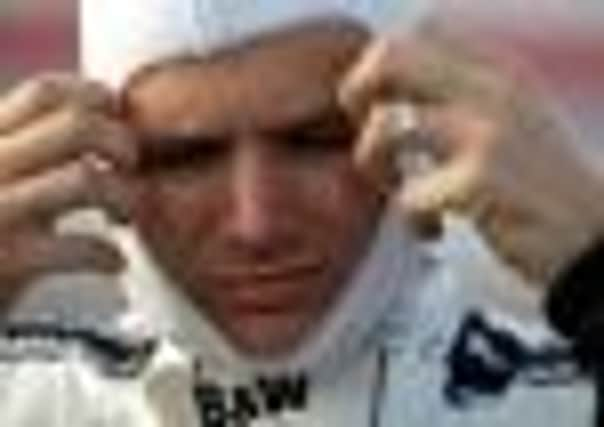Motor racing: Fence post impact killed IndyCar ace Dan Wheldon


Two-times Indianapolis 500 winner Wheldon was involved in a multiple car pile-up in the final race of the 2011 season on 16 October.
IndyCar has spent the last two months piecing together every shred of available data to determine the cause of the Englishman’s death at the age of just 33.
Advertisement
Hide AdAdvertisement
Hide AdCritics had previously queried the speed of the cars, the quality of the chassis, the short 1.5-mile high-banked oval at Las Vegas, and the number of cars involved, which in this instance was 34.
But it has now been suggested the accident could have occurred at any track, at any time.
After contact between two cars further ahead that led to a chain reaction, Wheldon’s crash was sparked by a spin from Vitor Meira that led to a collision between EJ Viso and Charlie Kimball. Wheldon then ran into Kimball, sending him airborne.
Taking up what then followed, IndyCar president of operations Brian Barnhart said: “The right rear of the 77 [car, Wheldon’s] made contact with the racing surface, and the chassis then travelled rearward first in an upright position towards a SAFER [Steel and Foam Energy Reduction] barrier in turn two.
“The 77 travelled in a nose-up, semi-airborne state for approximately 325ft.
“The chassis of the 77 impacted [upon] a post along the right side of the tub, and created a deep defect in the tub that extended from the bulkhead, along the upper border of the tub and through the cockpit.
“As the race car passed by, the pole intruded in the cockpit and made contact with the driver’s helmet and head. Dan’s injury was limited to his head.
“During the accident Dan appeared to suffer two distinct head forces. The first created levels through a head injury criteria, also known as a ‘HIC’ number, that normally does not produce any injury. The second force was a physical force and a physical impact, and it is that that produced the non-survivable blunt force injury traumas to Dan’s head. There was no evidence of mechanical or structural issues contributing to this accident.
Advertisement
Hide AdAdvertisement
Hide Ad“The impact with the fence, that resulted in Dan’s non-survivable injuries, involved the circumstances of direction, location and orientation.”
Barnhart, at a press conference with IndyCar chief executive Randy Bernhard at the Indianapolis Motor Speedway, did concede their were specific track criteria that played a part.
Barnhart insisted each high-banked oval has unique characteristics, and should be considered on an individual basis.
At Las Vegas, though, Barnhart said: “What was also witnessed was unlimited movement on the track surface under race conditions. This capability of relatively free movement on the track, without restraints of natural racing grooves, must be attributed to the overall track geometry beyond banking [and] had not previously been experienced.
“This movement not only allowed for increased car-to-car contact, but made it more difficult for drivers to predict the movement of others around them. As a result the opportunity for this accident was increased.
“Whilst the accident could have occurred at any track at any time, the dynamic of the current car and overall track geometry at the Las Vegas Motor Speedway under race conditions appeared to have been causal.”
Bernhard highlighted the fact that Wheldon’s IR3 Dallara chassis had covered more than 2,000,000 miles during its lifetime without any prior fatalities.
IndyCar are to roll out a new, safer chassis next year that Wheldon had been testing prior to his death.
Advertisement
Hide AdAdvertisement
Hide AdBernhard said: “The accident was significant due to the number of race cars damaged, but more importantly due to the non-survivable injuries to Dan Wheldon. Whilst several factors coincided to produce a perfect storm, none of them can be singled out as the sole cause of the accident. It is impossible to determine with certainty that the result would have been any different if one or more of the factors did not exist.”
Bernhard has confirmed IndyCar will not return to Las Vegas until further testing has been conducted.